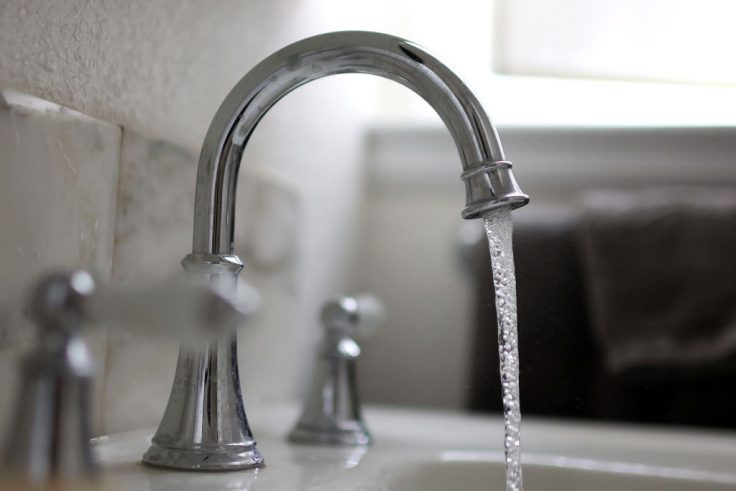California’s water regulators are weighing plans to limit individual daily water consumption to just 42 gallons per day by the end of the decade, with proposed rules that suppliers and agencies around the state are warning will hike people’s water bills with little benefit.
The state water board’s proposed rules map out its planned enforcement of a 2022 law ordering urban water suppliers to cut indoor allowances from 55 gallons to 47 gallons per day in 2025 and 42 gallons by 2031. Californians’ average daily consumption of 51 gallons is already much lower than the U.S. average of 80 to 100 gallons per person per day, according to the U.S. Geological Survey.
Water agency officials and suppliers around the state petitioned the board earlier this month to scale back its plan, complaining that the proposed regulations—which would limit water use for pools, landscape, and indoor use—would spike water infrastructure and administrative costs, hit every household with higher bills for less water, and impose onerous burdens on local regulators and constituents alike.
Californians are no stranger to paying higher prices in the name of fighting climate change. Earlier this year, Bay Area regulators voted to ban new gas furnaces and water heaters—a move that locals said could cost them tens of thousands of dollars in home retrofitting when they have to replace their old appliances. Electricity prices have soared nearly 70 percent since 2010 when the state started replacing fossil fuels with solar and wind power, which make up 27 percent of California’s power generation compared to 13.6 percent for the nation. And California consistently averages the highest fuel prices in the nation, thanks in part to special refinery rules.
"California Democrats want the state to set an example for the world of environmental sustainability," said Edward Ring, senior fellow at the conservative California Policy Center and state water policy expert. "But the way that they’re going about it is by enforcing rationing and high prices onto ordinary Californians for every aspect of life."
California already has the nation’s most strenuous state-level water regulations, said Richard Stern, a senior policy expert at the Heritage Foundation. While other states have rules in place around the time of day residents can water and other minor restrictions, "California is the only state with massive regulations on water use and water production," Stern said.
Under the proposed regulation, the state would set water limits for urban suppliers—calculated based on the per-person indoor limit and what California deems reasonable for uses like irrigation and pools.
The plan would save roughly less than 1 percent of the state’s total managed water, according to California’s own assessment. The state claims that the proposed regulations would cost about $13.5 billion but save $15.6 billion by reducing water supply and usage. But an independent assessment from a regional water agency said the real costs for communities and residents will likely top $7.4 billion, as the regulations and infrastructure costs will simply make the lesser amounts of water more expensive.
At the Oct. 4 meeting where the water board discussed its plan, a Sacramento-area water official told regulators that its proposed crackdown on Californians’ trees and garden plantings would undercut water agencies’ mission to "serve the public good."
"This regulation needs a reality check regarding what is possible in real life," said Amy Talbot, a water efficiency program manager with the Sacramento region’s Regional Water Authority.
Greg Bundesen, the conservation and communications supervisor at the Sacramento Suburban Water District, predicted its operating costs would increase by 1,250 percent, sending water rates spiking at least 10 percent even before the district accounts for the regulation’s infrastructure and compliance expenses. He warned the rules would undermine the "human right to water" by making it less affordable.
And Nicholas Schneider, general manager for the Georgetown Divide Public Utility District in the Sierra Nevada that’s seen two major fires in the past seven years, said the plan ignores the fact that his constituents are required by the state to water a substantial amount of defensible space around their homes to help fend off fires. He noted that the area gets hit frequently by small wildfires, and the district is already getting penalized for diverting water to fight them.
The state water board has until next year to approve its proposed rules.
